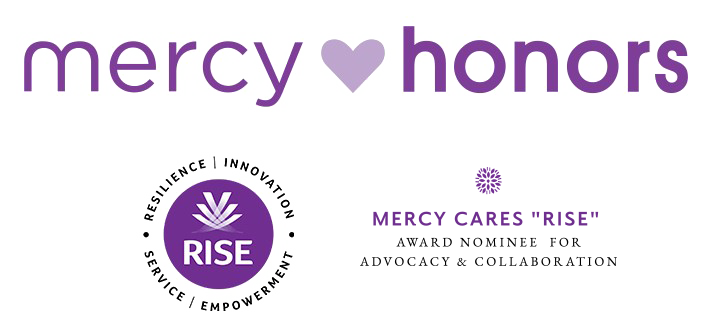
How Does Methadone Work as a Medication Assisted Treatment for Drug & Alcohol Addictions
Methadone is an opioid analgesic medication, known under the brand name Dolophine, that has been used since the 1970s in Medication Assisted Treatment (MAT) to treat those who are struggling with addiction to opioid drugs. Methadone has helped many individuals stop abusing opioid drugs as it is able to greatly lessen cravings, stop withdrawal symptoms, and has a long half-life (the amount of time it is effective in the body) of 36 hours. Methadone can be administered via pill or liquid form, with liquid being the most common form used to treat opioid addictions. Methadone is used to treat opioid addictions such as heroin, oxycodone, hydrocodone, morphine, fentanyl, meperidine, codeine, and hydromorphone. Methadone is not used as maintenance for non-opioid drugs such as alcohol, methamphetamines, or benzodiazepines.
Methadone can help individuals stop the drug seeking behavior and allow for a more stable life. Methadone maintenance program prices are very low compared to the cost of users having to purchase drugs illegally each day to get by and can save its patients tens of thousands of dollars a year. Methadone clinics dispense the medication at least 6 days a week and patients must gain the trust of the program by agreeing to submit random urinary analyses. If an individual is considering methadone treatment, they should understand that it is normally used as a long-term treatment. If only short-term medication assisted treatment is wanted, then methadone may not be the right choice.
Patients in methadone treatment programs are usually on methadone for a minimum of 1 year before they feel comfortable enough to begin the weaning/tapering process and stop treatment. Others have continued to stay on methadone for many years, some even permanently, as each individual is different in their past and history with opioid drug abuse. Individuals who are participating in methadone treatment should be realistic about when they are truly ready to begin the tapering process. An individual considering methadone treatment should also examine the risks, as there are several risks involved. One risk being that methadone can be a difficult drug to taper from and if not done slowly and correctly, according to doctor’s orders, intense pain and discomfort can be experienced during withdrawal. Methadone is also known for its prolonged withdrawal symptoms, usually lasting upwards of 3-6 months if an individual does not slowly taper off the drug first. It cannot be stressed enough that these long and painful withdrawal symptoms can be avoided by following doctors’ orders and making sure that tapering is only attempted when the patient is extremely certain that he or she is ready to commit to the tapering plan.
The tapering plan can be adjusted depending on the onset of the withdrawal symptoms and how they are affecting the life of patient. If an individual is unable to function at work due to withdrawal symptoms, it may be best to temporarily stop the tapering process until the patient’s body has time to adjust. Tapering off methadone should be a slow and methodical process that is tailored to fit the needs of the individual. No individual who is on methadone should attempt to rush themselves and taper quickly, because they could trigger a relapse if not careful.
Another risk to consider with methadone treatment is that methadone can be deadly in combination with other drugs. If an individual for example is on the methadone program and continues to abuse alcohol or any type of benzodiazepine, they could experience a deadly overdose. If an individual chooses to divert their methadone by selling or giving their medication to someone else, this could also have deadly results. Methadone is stronger than other opioid drugs and if taken in liquid form, it can be difficult to distinguish the amount they are ingesting. Methadone diversion can be fatal when given to an individual who is not established on the methadone program. Methadone is an opioid, so it does have risk of addiction and abuse. Like other opioids, methadone does give the same sensations of euphoria, however this usually subsides once a tolerance has been built and a stable dose has been found—usually after a month or so of treatment.
Methadone is heavily regulated because it is considered one of the stronger opiate medications available today. Methadone clinics have their patients adhere to strict rules and regulations to ensure that there is no diversion, abuse, or combining methadone with other drugs. If an individual is looking for long-term medication assisted treatment for opioid addiction, then methadone can be a good option. Methadone has helped many individuals get their lives back on track and stop the cycle of opiate addiction.
Different Forms of Methadone to Deter Misuse & Abuse
Methadone comes in liquid and pill form; liquid methadone is more often used in methadone maintenance treatment. Methadone in liquid form is usually either clear, pink, or orange colored liquid and doses are dispensed in small cups to be taken directly in front of a health care professional or stored in small “take home” bottles with child proof caps. Liquid methadone itself does not prevent abuse; however, methadone clinics prevent abuse by utilizing a system of building trust over time.
Depending on an individual’s length of time in the program and if they have clean urinary analyses, they will be given a certain number of bottles to take home with them so that they do not have to return to the clinic each day. Once an individual takes their daily dose from the “take home” bottles, they must keep the empty bottles and return them to the clinic before they can get their next set of “take home” doses. Methadone maintenance programs do this because they want to see that their patients are keeping track of their methadone and only using it as prescribed.
Patients are also required to keep their medication in lock boxes and will not be given medication to take home if they don’t have a box with a functioning lock on it. Methadone clinics will often perform random checks where they call patients and ask them to return to the clinic within 24 hours so that their pills can be counted and liquid measured. If it’s noted that the individual is abusing their medication by taking more methadone than they are prescribed, they will be dropped down from their level and will have to return to the clinic every day.
Patients will continue to receive one monitored dose daily and will receive no “take homes” until a period of time has passed and trust has been re-established. If an individual does not want to take the liquid form of methadone, they can request the pill form and some clinics will provide it if approved by the physician. The same rules that apply to the liquid methadone apply to the pill form. Regardless of form, patients are closely monitored to prevent diversion, deadly combinations with other drugs, and abuse in general.
Is Methadone a Short-term Solution for MAT?
Methadone is normally used as long-term opioid dependency treatment, with individuals usually staying in the methadone program for at least one year before they begin to taper. Some individuals will stay on methadone for an indefinite amount of time, as methadone maintenance can be sustained over a long period, depending upon the needs of the individual person.
Methadone can be used for short-term treatment as well. Started out at small doses for a few weeks or months, only to be gradually tapered down. Methadone is a good solution because it can help stabilize an individual enough to get their lives back on track, stave off cravings, and disengage them from any criminal activities or lifestyle. Individuals who have been on the methadone treatment program for a long period of time continue to see betterment in their lives and in the relationship to their community.
Methadone maintenance can help individuals in recovery stop the cycle of illicit drug use, it can prevent overdoses on illegal street opioids, and it can help keep an individual stable over time. Methadone maintenance coupled with counseling or attending support groups can greatly increase the chances of an individual’s success in recovery.
Side-Effects of Methadone Maintenance Treatment
Methadone, as with any other medication, does have certain side effects and long-term effects. Methadone side effects include things such as light headedness, drowsiness, dry mouth, retention of urine, gastrointestinal issues, and problems in sexual function. The basic side effects can be experienced by normal every day users. The more serious side effects include respiratory depression, fainting, seizures, irregular heartbeat, tremors, and anaphylactic shock, excessive drowsiness, and loss of balance. These more serious side effects are more likely to be experienced if an individual is abusing their medication.
The psychological side effects of methadone include hallucinations, inability to sleep, depression, becoming anxious, paranoid, having delusions, suicidal ideations, and impaired concentration. Long-term methadone side effects, those who are using methadone daily or even abusing it for long extended periods of time and can include heart problems. Each year, 5,000 people die as a result of abusing methadone each year. Because methadone is an opioid analgesic it does give the same effects as other opiate drugs such as euphoria and produces a “high” feeling. Many who begin methadone maintenance treatment will experience these effects more during the beginning, while they are adjusting to a proper and steady dose. If an individual is taking their methadone prescription as prescribed, they will likely stabilize and become less likely to experience euphoria or any other side effects that come along with methadone. It’s when methadone is abused that the dangerous side effects, or even overdose can occur.
Ultimately, the side effects of methadone are similar to those of other drugs. Methadone should always be taken as prescribed and caution should be exercised when increasing a dose. Another unfortunate side effect of methadone is that individuals who are driving or operating heavy machinery are more likely to experience drowsiness and individuals have reported falling asleep while operating or driving, which can result in serious accidents or collisions. Of course, as time goes on, an individual can adjust to the side effects of methadone and exercise caution when operating a vehicle or other machinery. An individual considering methadone maintenance treatment should always discuss the short and long-term side effects with a physician.
Benefits of Methadone Treatment
Methadone maintenance treatment is often an effective choice for those who are struggling with opioid dependency. Research has shown that methadone greatly reduces the use of illicit drugs and the risky behaviors that come along with drug use such as needle sharing or participating in criminal activity. Methadone is also a cost-effective way to treat opiates dependency and has improved the lives of patients who adhere to their treatment plan and take their medication as prescribed.
Methadone treatment programs have ways in which they monitor potential abuse of methadone. Patients are required to submit random urine drug screens to ensure that all illicit drug use has ceased, this gives accountability and assurance that their treatment is on the right track. Each patient is carefully monitored, and doses are carefully adjusted so that minimal side effects are experienced. Methadone is also a good option because it reduces cravings for opioid drugs for up to 36 hours while still preventing patients from experiencing an intense high that they would commonly seek out in other opioids.
Methadone maintenance treatment can be short-term, but it is more commonly used as a long-term solution. Methadone maintenance has improved the lives of many individuals were desperately seeking freedom from addiction to illicit opiate-based drugs.
Risks of Methadone Treatment
Methadone treatment has been an effective way for many to treat the opioid dependency. Many see methadone treatment as “trading one drug for another,” but fail to see how, for some individuals, it can truly be helpful. That being said, before choosing to participate in methadone treatment, one should always consider the risks.
Methadone is a synthetic opiate that has a long half-life, meaning that it works in the body for a pro-longed period of time when compared to other opiate drugs and medications. Methadone treatment still does come with the risk of abuse, although usually treatment centers will closely monitor the amount an individual is given to take home, as well as conduct random urinalysis to ensure that the individual is not using other drugs or taking more of the methadone than prescribed. If methadone is not taken as prescribed, it could result in a fatal overdose. Methadone is an opiate-based medication and is addictive because it does create physical and mental dependence.
Like all other opioids, methadone does give feelings of euphoria, primarily in the beginning stages of treatment and will later subside after an individual has built a tolerance to the drug. It’s important to know that withdrawal from methadone does last longer than withdrawal from other opioid drugs. Methadone treatment should be used for long-term treatment, with most individuals staying in a methadone treatment program for more than one year.
It’s important to know that methadone should never be stopped abruptly because it can cause intense withdrawal symptoms. When an individual is ready to stop a methadone program, they should plan on the tapering process lasting anywhere from 3-6 months to ensure that detox is done slowly, with the minimal amount of pain. Individuals should take great care when operating a car or heavily machinery as methadone is known to cause excessive tiredness and drowsiness, especially in early treatment.








